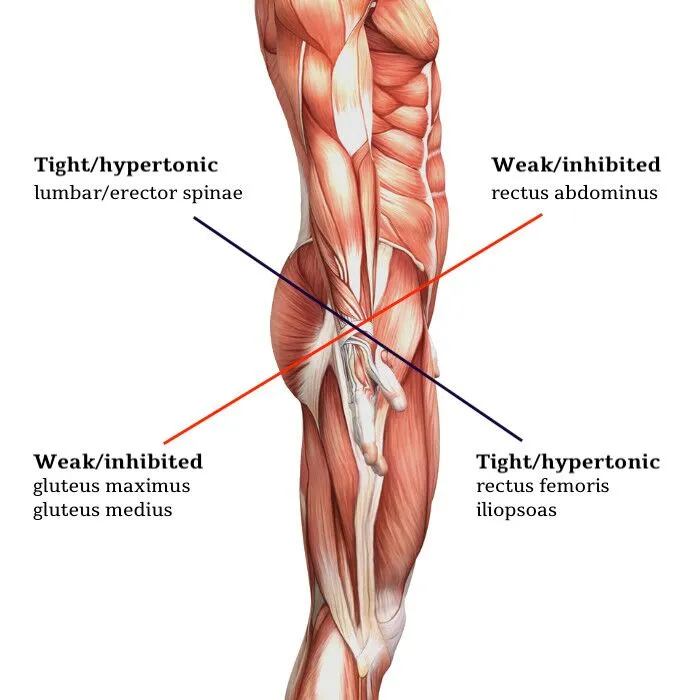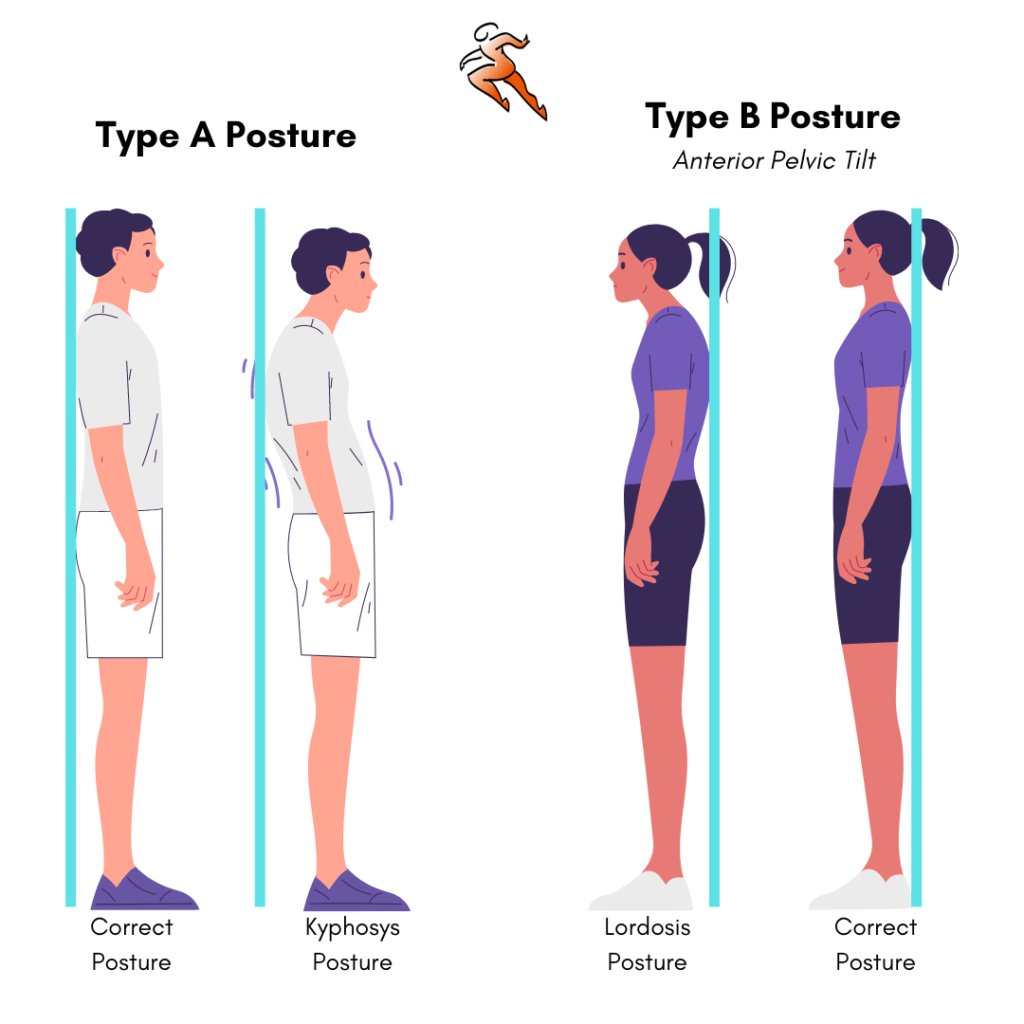Lower Cross Syndrome is a postural distortion pattern that happens when there is muscular imbalances between weak and tight muscles in the hips, glutes, abdominals, and back muscles. The dysfunctional relationship between these muscles that is LCS results in low back pain.

How Do You Get Lower Cross Syndrome?
Lower Cross Syndrome can be caused by a lot of different things, but the most common are:
- Poor posture
- Muscle Imbalances
- Prolonged sitting without consistent breaks for movement and blood flow
- Sedentary lifestyles
- Work and leisure habits
- Improper posture while working or focusing on a task
If you have any of the Lower Cross Syndrome symptoms, please make an appointment with your physician as soon as you can. If your lower back pain has been persistent for a week or more you need to see your physician, especially if the pain is traveling anywhere else on the body.
Lower Cross Syndrome symptoms include:
- Lower back pain
- Tight hips and hip flexors
- Reduced mobility in the hips
- Anterior Pelvic Tilt or “Cheerleader Butt”
- Joint pain
- Difficulty activating or growing the glutes
- Type A or Type B posture (Anterior Pelvic Tilt)

Managing Lower Cross Syndrome
While home remedies like corrective exercises and ergonomic adjustments may provide temporary relief, self-diagnosis and treatment are discouraged. Leaving LCS unaddressed will only make the pain and condition worse. Our doctors recommend making an appointment with a chiropractor that specializes in Active Release Technique and Myofascial Mobilization. You can do things at home for relief and prevention, but for proper treatment, consult a physician for their guidance on proper home exercise.
- Visit a chiropractor that specializes in Myofascial Mobilization and Active Release Technique
- Practice good posture habits
- Use the correct form when exercising, lifting heavy objects, or perfomring physical activity like sports
- Manual therapies
- Have your functional movement patterns evlauated to determine specific movement dysfunctions that may be contributing: Schedule a virtual consultation or in office appointment with Dynamic Spine and Sports Therapy.
- Cupping
- Dry Needling
- Learn to properly train the core and glutes
- Making exercise a priority
- Stay hydrated
- Take regular breaks from sitting to move and stretch, setting alarms to set aside time to move may be helpful
- Stretch the tight and overworked muscles
- Address the muscular imbalance that you have
- Incorporate exercise routines that address the underactive or weak mucles
Once the muscular imbalance has been addressed, strengthening exercises may be reintroduced. A consistent exercise routine that does not neglect muscles and lead to imbalances is essential for maintaining correct posture.
Why Choose Dynamic Sports Therapy?
Dynamic Sports Therapy is a sports rehabilitation focused chiropractor office. We specialize in rehabilitation of the body as a whole, wehreas other chiropractors often focus just on the spine and its relationship with the rest of the body. Dynamic’s doctors focus on evaluating your specific movement patterns, identifying the movement dysfunction you may have, and they treat with the sole purpose of helping you move better. Better movement means less pain and compensation by other parts of the body.